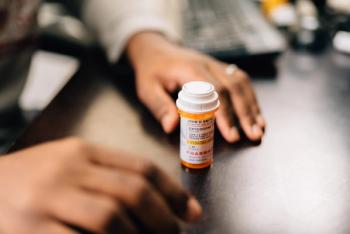
Pharmacy Practice in Focus: Health Systems
- November 2017
- Volume 6
- Issue 6
Clinical Use of Generic Injectable Drugs in Hospitalized Patients
In acute-patient-care settings, injectable drugs are used ubiquitously. Injectables offer several advantages over other administration routes, including precise and adjustable dosing, predictable bioavailability, and fast onset of action.
In acute-patient-care settings, injectable drugs are used ubiquitously. Injectables offer several advantages over other administration routes, including precise and adjustable dosing, predictable bioavailability, and fast onset of action. Intravenous administration is particularly crucial for critically ill patients and others undergoing anesthesia in whom the onset of drug action is required in seconds.
The average number of injectable drugs administered to patients during a typical hospitalization in the United States has not been formally quantified, but a recent analysis of the QuintilesIMS National Sales Perspective pharmacy database found that the majority of nonfederal US hospital drug spending in 2016 was for injectables ($25.8 billion), with 31.7% of that spending for generically marketed preparations.1
Two hospital care areas that rely heavily on generic injectables are operating rooms and intensive care units (ICUs). An adult patient undergoing an uneventful general anesthetic for a variety of surgical procedures may reasonably receive no fewer than 5 different classes of injectable drugs (Table). Clinicians working in these settings require several other classes of injectables, including vasopressors and anti-arrhythmics, to be immediately available for the management of potential complications of anesthesia and surgery. For more complex or lengthy procedures, the number of required drugs may reach 30 or more, to be delivered in potentially hundreds of incremental doses.
In the ICU, the vast majority of critically ill patients are likely to require treatment with crystalloid solutions, anticoagulants, acid suppressive agents, sedatives, analgesics, electrolytes, and antibiotics. The results of a 2015 multicenter observational study showed that the most common classes of typically injectable medications used in medical ICU patients were anti-infectives, opioids, antihypertensives, and insulin.2
Hospitals’ and physicians’ reliance on generic injectables for routine clinical care exposes 2 key vulnerabilities of these formulations: shortages and cost increases.
One generic injectable drug in shortage and used commonly in hospitalized patients is sodium bicarbonate.3 Sodium bicarbonate is used by clinicians to treat life-threatening metabolic acidosis. It is also used for the management of select drug overdoses and a major component of dialysate solutions used in the treatment of renal failure. Several clinical reviews describe injectable drug shortages with implications for treatment of infectious diseases,4 delivery of anesthesia,5 and resuscitation.6 Drug shortages require hospitals and clinicians to alter drug purchasing, dispensing, and prescription practices, with consequences for patient care and its outcomes.7 There is some observational evidence that national shortages of generic injectable medications are associated with patient harm.8
Dramatic cost increases may be related to drug shortages but can also be caused by rebranding or manufacturer restructuring. A 2016 report sponsored by the American Hospital Association and Federation of American Hospitals identified 10 drugs with price increases of 300% or more between 2013 and 2015. The list included 6 generic injectables used in the operating room and ICU: hydralazine (776%), nitroprusside (672%), isoproterenol (480%), neostigmine (446%), glycopyrrolate (316%), and ephedrine (300%).9
In a recent review article, the authors argued that unique market forces and manufacturing practices inextricably link the problems of drug shortage and significant price increases for generic injectable medications.10 For example, recent rebranding of vasopressin, commonly used alongside norepinephrine for the management of patients with septic shock, increased its cost more than 200% and led to a modification of institutional protocols to reduce use.11
Drug manufacturers are not required to reveal which factories produce each drug they manufacture.10 Therefore, Hurricane Maria’s impact on drug manufacturing facilities in Puerto Rico, which produces 10% of all drugs consumed in the United States, remains to be seen.12 Even in the absence of devastating natural disasters, supply instability of generic injectable drugs has significant consequences for the US health care system. Further work by pharmaceutical manufacturers, the FDA, and legislators to address these issues is necessary to ensure that the sickest patients receive the treatments they need.
Emily A. Vail, MD, MSc, is an assistant clinical professor of anesthesiology at the University of Texas Health Science Center at San Antonio. Mona K. Patel, PharmD, BCCCP, is a clinical pharmacy manager, critical care, in the surgical intensive care unit at NewYork-Presbyterian Hospital/Columbia University Medical Center.
References
- De Oliveira Jr. GS, Theilken LS, McCarthy RJ. Shortage of perioperative drugs: implications for anesthesia practice and patient safety. Anesth Analg. 2011;113(6):1429-1435. doi: 10.1213/ANE.0b013e31821f23ef.
- Fox ER, Sweet BV, Jensen V. Drug shortages: a complex health care crisis. Mayo Clin Proc. 2014;89(3):361-373. doi: 10.1016/j.mayocp.2013.11.014.
- Fox ER, Tyler LS. Potential association between high-cost medications and drug shortages. Pharmacotherapy. 2017;37(1):36-42. doi: 10.1002/phar.1861.
- NORC at the University of Chicago. Trends in hospital inpatient drug costs: issues and challenges. Presented at: American Hospital Association and the Federation of American Hospitals; October 11, 2016; Washington, DC. http://aha.org/content/16/aha-fah-rx-report.pdf. Accessed October 18, 2017.
- Quadri F, Mazer-Amirshahi M, Fox ER, et al. Antibacterial drug shortages from 2001 to 2013: implications for clinical practice. Clin Infec Dis. 2015;60(12):1737-1742. doi: 10.1093/cid/civ201.
- Schumock GT, Li EC, Wiest MD. National trends in prescription drug expenditures and projections for 2017. Am J Health System Pharm. 2017;74(15):1158-1173. doi: 10.2146/ajhp170164.
- Smithburger PL, Buckley MS, Culver MA, et al. A multicenter evaluation of off-label medication use and associated adverse drug reactions in adult medical ICUs. Crit Care Med. 2015;43(8):1612-1621. doi: 10.1097/CCM.0000000000001022.
- Statement from FDA commissioner Scott Gottlieb, M.D. on FDA’s continued assistance following the natural disaster in Puerto Rico [news release]. FDA. October 6, 2017. fda.gov/NewsEvents/Newsroom/PressAnnouncements/ucm579493.htm. Accessed October 9, 2017.
- FDA. FDA drug shortages. accessdata.fda.gov/scripts/drugshortages/dsp_ActiveIngredientDetails.cfm?AI=Sodium%20Bicarbonate%20Injection,%20USP&st=c&tab=tabs-1. Published March 1, 2017. Accessed October 10, 2017.
- Vail E, Gershengorn HB, Hua M, Walkey AJ, Rubenfeld G, Wunsch H. Association between US norepinephrine shortage and mortality among patients with septic shock. JAMA. 2017;317(14):1433-1442. doi: 10.1001/jama.2017.2841.
- Wiggins BS, Nappi J, Fortier CR, Taber DJ. Cardiovascular drug shortages: predominant etiologies, clinical implications, and management strategies. Ann Pharmacother. 2014;48(9):1177-1186.
- Wu JY, Stollings JL, Wheeler AP, Semler MW, Rice TW. Efficacy and outcomes after vasopressin guideline implementation in septic shock. Ann Pharmacother. September 14, 2016. doi: 10.1177/1060028016669163.
Articles in this issue
almost 8 years ago
Fosfomycin Usealmost 8 years ago
340B Oversight: Interdisciplinary Approach Ensures Continuous Compliancealmost 8 years ago
The Skinny on Weight-Loss Medicationsalmost 8 years ago
Lung Cancers: Facts, Causes, and Typesalmost 8 years ago
Updates in Heart Failure Drug Therapyalmost 8 years ago
Neonatal Abstinence Syndromealmost 8 years ago
Breakthrough Cancer PainNewsletter
Stay informed on drug updates, treatment guidelines, and pharmacy practice trends—subscribe to Pharmacy Times for weekly clinical insights.





















































































































































































































